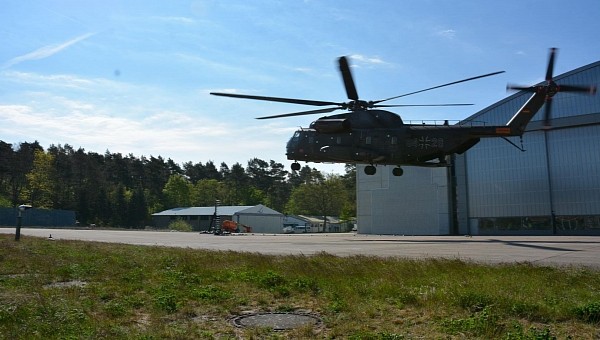The airplanes and helicopters of the future are supposed to be better not just for the environment, but also in terms of flight experience. The solutions that are developed for cutting harmful emissions could also drastically reduce the noise and vibration that are not so pleasant for passengers and anyone nearby. But scientists are also working on finding solutions for the aircraft and rotorcraft already in operation, such as the CH-53G.
The German Armed Forces’ CH-53G is used to crossing long distances to deliver important cargo for troops, but this time it had to perform some rather delicate moves, “dancing” close to the ground.
This happened during special flight tests conducted by researchers at DLR (the German Aerospace Center) in Gottingen. They are trying to figure out how to make large and heavy helicopters such as this Sikorsky Stallion more comfortable and quieter.
In order to determine the best way of reducing noise and vibration, they had to literally visualize the noise. How is this done? Well, by using highly-advanced equipment to capture air vortices.
These are generated behind the rotor blade tip, DLR explains, because of the negative pressure on the upper side of the blade, and the positive pressure on the lower side. When the vortex of one rotor blade collides with another, the result is what’s known as “aerodynamic noise.”
For this recent test, the heavy-duty helicopter was loaded with 14 tonnes of cargo, and then flown at just 2 to 12 meters (6.5 – 39 feet) above the ground. While it was “dancing” in hovering flight, so close to the ground, several high-speed cameras recorded the air vortices on its six rotor blades, from various angles.
This isn’t the first endeavor of its kind for DLR, which claims to have been the first to visualize air vortices in flight, back in 2013.
Feedback from this test will be used to advance research related to making heavy helicopters more quiet. A potential solution would be to change the shape of the rotor blades, and this was already done for some smaller models, like the Airbus H160.
This happened during special flight tests conducted by researchers at DLR (the German Aerospace Center) in Gottingen. They are trying to figure out how to make large and heavy helicopters such as this Sikorsky Stallion more comfortable and quieter.
In order to determine the best way of reducing noise and vibration, they had to literally visualize the noise. How is this done? Well, by using highly-advanced equipment to capture air vortices.
These are generated behind the rotor blade tip, DLR explains, because of the negative pressure on the upper side of the blade, and the positive pressure on the lower side. When the vortex of one rotor blade collides with another, the result is what’s known as “aerodynamic noise.”
For this recent test, the heavy-duty helicopter was loaded with 14 tonnes of cargo, and then flown at just 2 to 12 meters (6.5 – 39 feet) above the ground. While it was “dancing” in hovering flight, so close to the ground, several high-speed cameras recorded the air vortices on its six rotor blades, from various angles.
This isn’t the first endeavor of its kind for DLR, which claims to have been the first to visualize air vortices in flight, back in 2013.
Feedback from this test will be used to advance research related to making heavy helicopters more quiet. A potential solution would be to change the shape of the rotor blades, and this was already done for some smaller models, like the Airbus H160.








